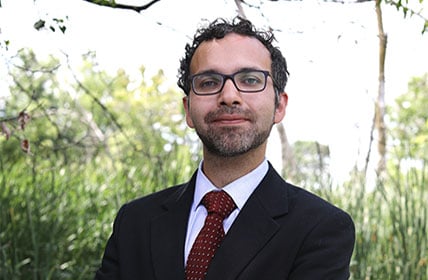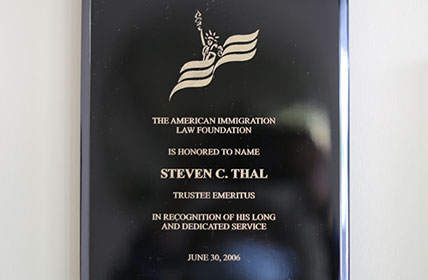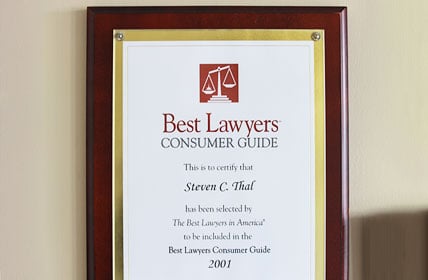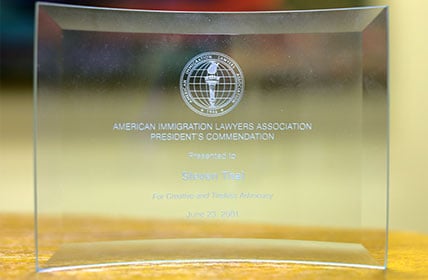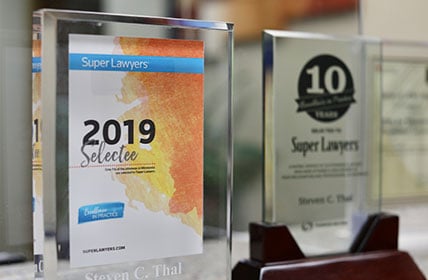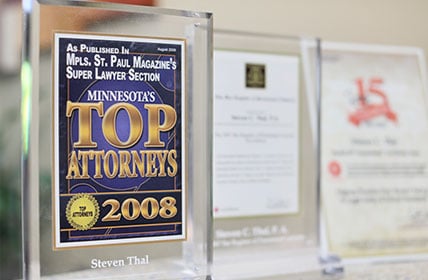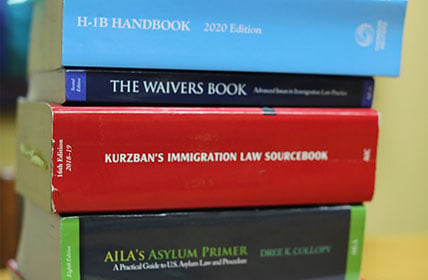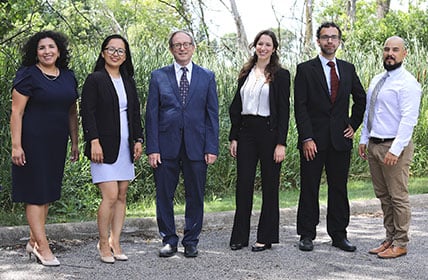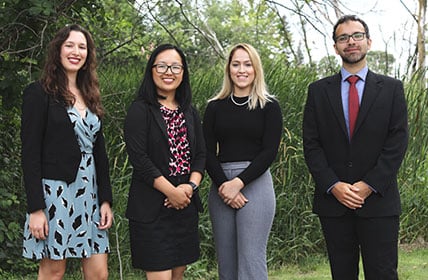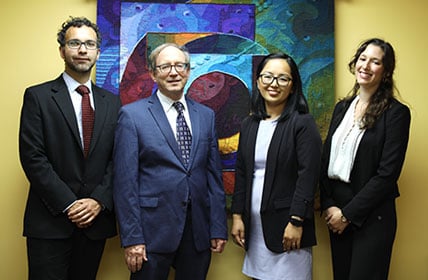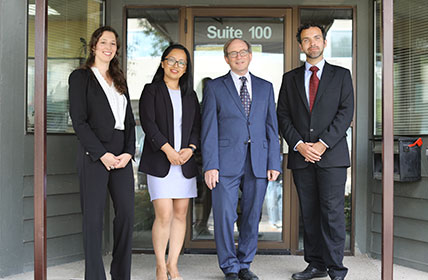Understanding The Program Electronic Review Management (PERM) System
PERM replaces the labor certification procedure that had been in effect for more than 35 years. This new online system was meant to streamline the labor certification procedure and improve processing times and efficiency. Certain aspects of the prior system were maintained such as the requirement of establishing that there aren’t sufficient U.S. workers who are able, willing, qualified, and available at the time of admission and at the place the labor is to be performed – and that the employment of the prospective immigrant will not adversely affect the wages and working conditions of similarly employed U.S. workers.
Before commencing with the labor certification process and the required recruitment outlined below, we will review the job description and request a prevailing wage determination from the State Workforce Agency (SWA). The SWA provides wage surveys as guidelines for us to predetermine the wage. The survey delivers four levels of wages for each position. As a position requires higher education, a greater number of years of experience or a higher level of responsibility, the wage shifts to an upper level. Before we finalize the position requirements, we will research the wage level and adjust the listed requirements to meet the offered wage. The position will be classified either as a professional position requiring at least a four-year degree (a bachelor’s degree) or a higher degree, and/or experience; or the position can be classified as a nonprofessional position that does not necessarily require the advanced degree or added experience, and may not even require the full four-year degree either. The position of an industrial engineer would likely be classified within the professional category.
Once the wage has been determined, we can start the recruitment process. The employer is required to advertise the position and recruit as outlined below:
Required Recruitment For All Qualifying Positions
1. Newspaper advertising – The advertisement must be on two different Sundays in the newspaper of general circulation in the area of intended employment most appropriate to the occupation and to the workers who are likely to apply for the job opportunity and most likely to bring responses from able, willing, qualified and available U.S. workers. Documentation of required advertisements can be satisfied by furnishing copies of the newspaper pages in which the advertisements appeared or proof of publication furnished by the newspaper.
2. SWA job order – Recruitment will require placement of a 30-day job order with the SWA (State Workforce Agency) serving the area of intended employment. The start and end dates of the job order entered on the application shall serve as documentation of this step.
3. Posting notice – The employer must give notice of the filing of the Application for Permanent Employment Certification and be able to document that notice was provided. The notice must be either to:
- The bargaining representative(s) (if any) of the employer’s employees in the occupation classification for which certification of the job opportunity is sought in the employer’s location(s) in the area of intended employment. Documentation may consist of a copy of the letter and a copy of the Application for Permanent Certification form that was sent to the bargaining representative.
- The employer’s employees at the facility or location of the employment if there is not such a bargaining representative. The notice, prepared by our office, must be posted for at least 10 consecutive business days. The notice must be clearly visible and unobstructed while posted and must be posted in conspicuous places where the employer’s U.S. workers can readily read the posted notice on their way to or from their place of employment. Appropriate locations for posting notices of the job opportunity include variations in the immediate vicinity of the wage and hour notices required by 29 CFR 516.4 or occupational safety and health notices required by 29 CFR 1903.2(a).
In addition, the Department of Labor (DOL) requires that the employer publish the notice in any and all in-house media, whether electronic or printed, in accordance with the normal procedures used for the recruitment of similar positions in the employer’s organization.
The documentation requirement may be satisfied by providing a copy of the posted notice and stating where it was posted and by providing copies of all the in-house media, whether electronic or print, that were used to distribute notice of the application in accordance with the procedures used for similar positions within the employer’s organization.
4. Additional recruitment steps (professional positions) – For all professional jobs, recruitment will be required to include at least three additional types of recruitment from the following alternatives:
- Job fairs – Recruitment at job fairs for the occupation involved in the application can be documented by brochures advertising the fair and newspaper advertisements in which the employer is named as a participant in the job fair.
- The employer’s website – The use of the employer’s website as a recruitment medium can be documented by providing dated copies of pages from the website that advertise the occupation involved in the application. [This apparently can be counted as one of the three steps required in a professional occupation, even if required as part of the notice under 656.10 (the posting notice)].
- A job search website other than the employer’s website – The use of a job search website other than the employer’s website can be documented by providing dated copies of pages from one or more website(s) that advertise the occupation involved in the application. Copies of webpages generated in conjunction with the newspaper advertisements required by paragraph (e)(1)(i)(B) of this section can serve as documentation of the use of a website other than the employer’s website.
- On-campus recruiting – The employer’s on-campus recruiting can be documented by providing copies of the notification issued or posted by the college’s or university’s placement office naming the employer and the date it conducted interviews for employment in the occupation. [Contrast this step with posting at a campus recruitment office].
- Trade or professional organization – The use of professional or trade organizations as a recruitment source can be documented by providing copies of pages of newsletters or trade journals containing advertisements for the occupation involved in the application for alien employment certification. [This step appears to require print media.]
- Private employment firms – The use of private employment firms or placement agencies can be documented by providing documentation sufficient to demonstrate that recruitment has been conducted by a private firm for the occupation for which certification is sought. For example, documentation might consist of copies of contracts between the employer and the private employment firm and copies of advertisements placed by the private employment firm for the occupation involved in the application.
- Employee referral program with incentives – The use of an employee referral program with incentives can be documented by providing dated copies of employer notices or memoranda advertising the program and specifying the incentives offered.
- Campus placement offices – The use of a campus placement office can be documented by providing a copy of the employer’s notice of the job opportunity provided to the campus placement office. [The supplementary material in the Federal Register indicates this step is not appropriate for jobs requiring experience].
- Local and ethnic newspapers – The use of local and ethnic newspapers can be documented by providing a copy of the page in the newspaper that contains the employer’s advertisement.
- Radio and television advertisements – The use of radio and television advertisements can be documented by providing a copy of the employer’s text of the employer’s advertisement along with a written confirmation from the radio or television station stating when the advertisement was aired.
If an employer has utilized any of the above recruitment steps for the position within six months of our submission of the PERM application online, that step can be included.
When recruitment is completed, we will assist an employer to prepare a recruitment report describing the recruitment steps undertaken and the results achieved, the number of hires, and, if applicable, the number of U.S. workers rejected, categorized by the lawful job-related reasons for such rejections. The certifying officer, after reviewing the employer’s recruitment report, may request the U.S. workers’ resumes or applications, sorted by the reason the workers were rejected. The report will be one of the most significant documents in the process, especially in the event of an audit. If audited, the resumes are likely to be compared to the recruitment report to see if the reasons for rejection are supported by the resumes.
We can file Form 9089, Application for Permanent Employment Certification, 30 days after the date of the final recruitment ad. PERM allows the application to be filed online. At this time, no processing time information is available for PERM applications.
When the DOL approves the labor certification application, we would then be able to file the Form I-140, Immigrant Petition for Alien Worker, with the U.S. Citizenship and Immigration Services. If there is an immigrant visa number available, the employee can file the Form I-485, Application to Adjust Status to Permanent Resident (green card application), concurrently with the I-140 petition, together with an application for employment authorization. If an immigrant visa number is not available at the time of filing, then the employee/beneficiary would have to wait until a visa number becomes available to him/her before submitting the application for the green card. We will keep you informed of possible visa backlog issues as we proceed with the case.








